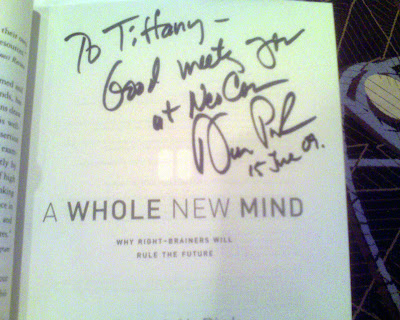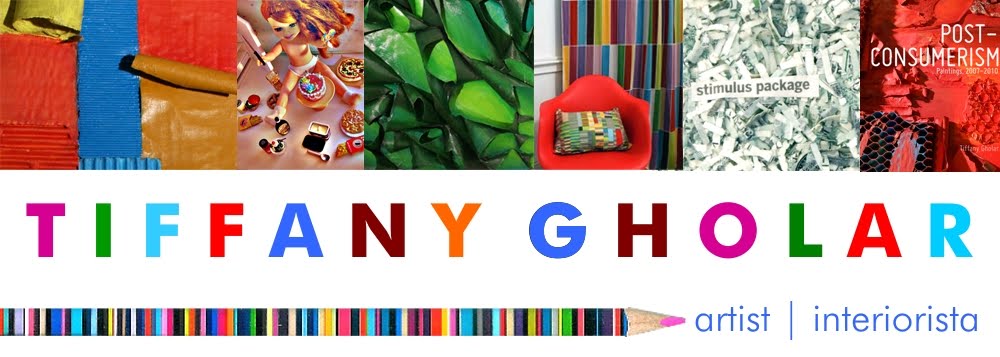
The first time I read A Whole New Mind by Daniel Pink, I was working at my dead-end job selling carpet at a department store that never had enough customers for me to make a decent salary. And because the store was dead and there was nothing to do, I had time to study at work. When I was finished studying, I read all kinds of books that I checked out of the library. A Whole New Mind was a revelation. Never before had I read about right-brained thinking in such a positive light. It changed the way I looked at things. And so I was so excited to go and hear him speak that I made sure I got to his 8 am keynote early, and I am not a morning person.
The title of his talk was "Monkeys, Candles, and Clients." His subject was motivation. The monkeys and candles of the title were part of two psychology experiments that he referenced. These experiments led to discoveries that changed the way many people thought about human motivation.
I should probably mention here that one of the only other subjects that captures my interest almost as much as art, design, and writing is psychology. So I do remember learning about extrinsic and intrinsic motivation. (Because I am intrinsically motivated to remember.) Extrinsic motivation depends upon external factors, like earning a high salary. Intrinsic motivation comes from within.
Daniel Pink spoke about harnessing the power of intrinsic motivation. He calls it Motivation 3.0. Motivation 1.0 is the fight or flight response. It ensures that our basic needs for survival are met. Motivation 2.0 is the "carrot and stick" reward and punishment system that is currently in place today. This system, he said, has led to the "spectacular underachievement" of our current decade. I'm sure a lot of people feel that way now, especially looking at our economy and job market.
Anyway, the researchers who performed the experiments the title refers to came to the conclusion that rewards and punishments sometimes work, but often external motivators actually extinguish motivation and diminish performance and creativity. Rewards and punishments work for scripted, left-brain work, but right-brain work hinges upon intrinsic motivation. The proponents of Motivation 2.0 would say it shouldn't be possible for the open source concept to work, yet we have come to the point where Microsoft Encarta, an encyclopedia people were paid to create, is folding, while Wikipedia, which is created by people who do not get paid for it, continues to grow. This is one very memorable example he gave of how Motivation 2.0 is failing in the conceptual age.
Autonomy, mastery, and purpose are 3 components of Motivation 3.0. Too many of us become passive and inert though we are born with an innate desire to be active and engaged. It is our nature to be curious and self-directed, and that is why intrinsic motivation is so important. There is a paradox: those who are least motivated to receive extrinsic rewards eventually receive them.
He gave examples of how autonomy can be fostered in a business setting. At Atlassian, the engineers have 1 day a week to work on whatever problem they want. At Best Buy's corporate headquarters, they have a results-only work environment with no set hours. Both companies are more productive because of this.
He also said that without purpose, which Motivation 2.0 does not recognize, it is hard to do amazing work. But people who work on something with a greater sense of purpose do better work.
Then he warned of the obstacle that stands in the way of Motivation 3.0 in the design industry: the tyranny of the client. When you do work for hire, you cede control to the client, which can be frustrating. And there are 2 responses to being controlled: compliance and defiance. So as designers we need to educate our clients on how we do our best work, making them part of the solution rather than part of the problem. He said to think of design as an act of public service, or as Eames did, of the designer as a host and the client as a guest. When the needs of both overlap, that is when we do our best and most enduring work.
Yes, that was a lot to process at 8 in the morning. I have been reflecting on it all day, even as I went to the showrooms and looked around. For me, just being at NeoCon this year was intrinsically motivated. I am working as a citizen blogger because I had planned to attend NeoCon long before the opportunity arose. I have always felt the pull of intrinsic motivation in my own life. Most of the things I do well tend to be the things that no one has told me to do. And I find myself chafing under the direction of "control freaks" who try to micromanage me, be they instructors or employers. So I look forward to a day when Motivation 3.0 becomes the rule and not just a novel exception. I think that working under such a model will free us to reach our highest potential not just as workers, but as human beings and arrive at a place of greater self-actualization.
If you enjoyed my summary, I suggest you follow Daniel Pink on Twitter. I've realized that the quality of your Twitter experience depends upon the quality of the people your follow, and he always has something interesting to say.

No comments:
Post a Comment